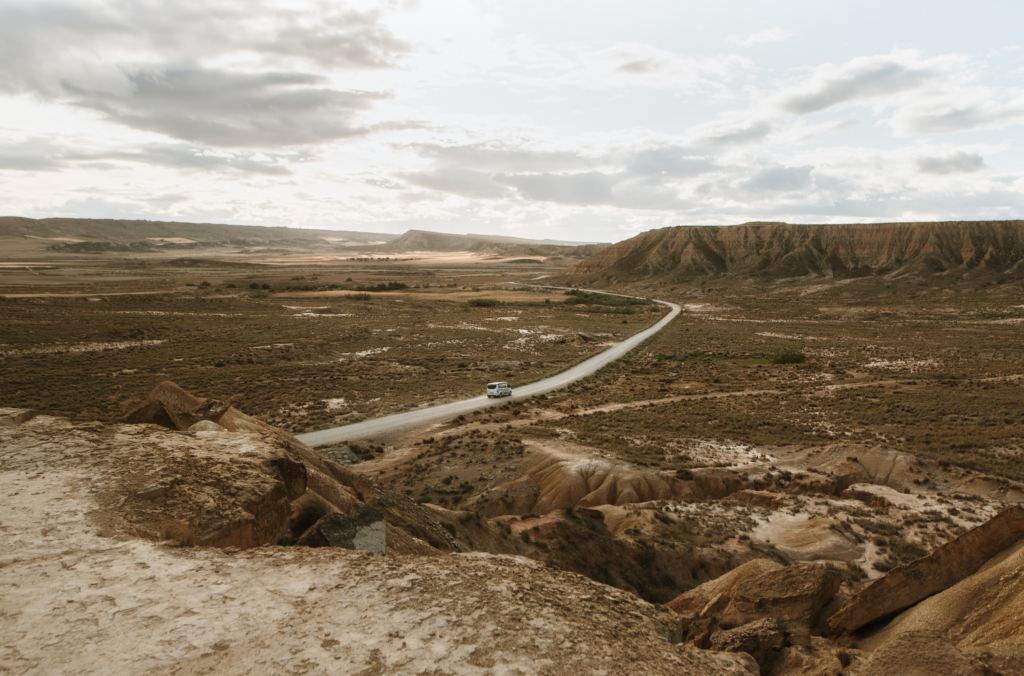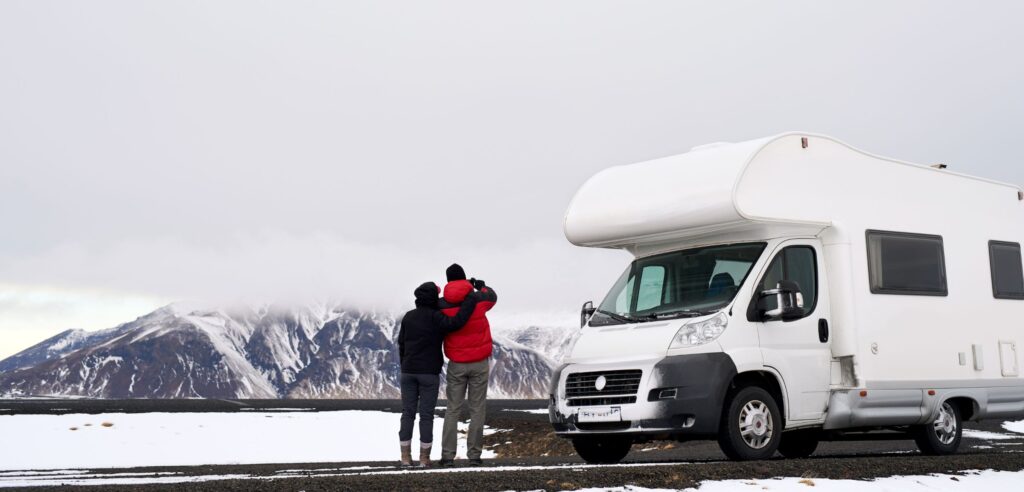If you’ve never built out a van life electrical system or had experience with other electrical systems before, the process can seem daunting. Where do you begin when it comes to choosing the right solar panels and batteries? What about components like an inverter? Should you install AGM batteries or lithium batteries?
Fortunately, it’s actually not too difficult to determine the power requirements for your camper power system and solar power system. Doing a straightforward audit of your power usage will easily allow you to figure out how many batteries and solar panels you need. From there, you can design the rest of the system.
Table of Contents

How to Size Your Campervan Electrical System
Let’s take a look, step by step, at the process for sizing the various components of your camper van electrical system.
Consider Your Energy Sources
Before you do anything, the first thing to consider is where your power will be coming from. For the purposes of this article, we’re assuming that you plan to spend a lot of time off grid and won’t have regular access to shore power. That means you’ll be mostly dependent on solar power and alternator charging.
The important thing to remember about solar panels is that they work best in direct, steady sunlight. Unfortunately, the reality of most people’s experience is that clouds, trees, and winter months greatly reduce the amount of usable power that can be extracted from solar.
Think carefully about where you’ll be taking your van and the time of year you’ll be there. Ideally, you want enough battery capacity to be able to power your van for two full days without having to recharge. You can always turn on the motor and burn through gas to top up the batteries if you’re faced with a few cloudy days in a row, but it isn’t ideal.
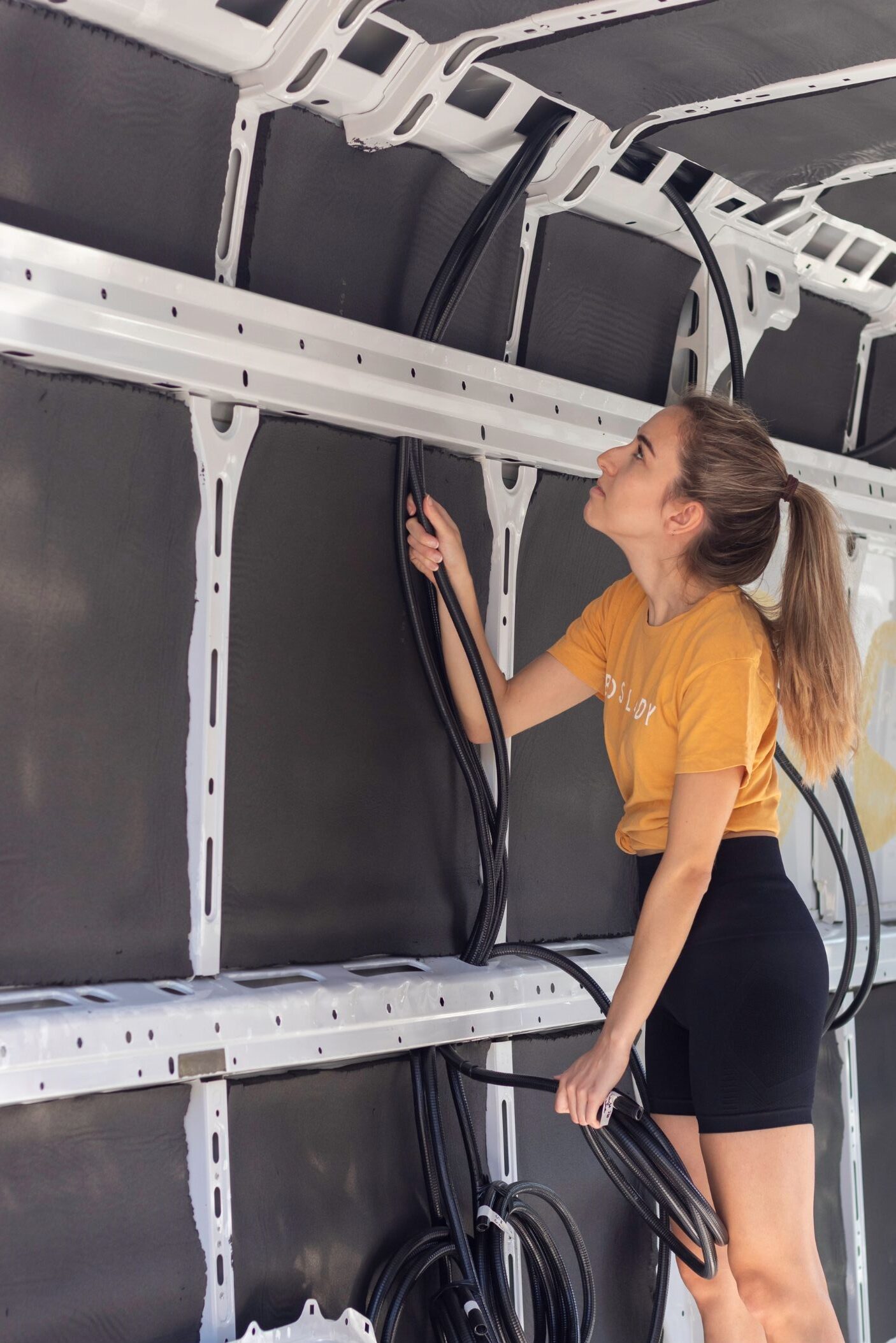

Daily Power Use Audit
Next, do an audit of your daily power use. By this, we mean going through every appliance, component, and device in your van that draws power and writing down the number of amps it uses. Do this for both your DC and AC power usage.
DC Power Audit
Your DC power appliances and components are the things that are wired directly into the van. This can include lights, the stereo, solanoid for propane, the fridge, water pumps, air conditioner, etc. For each component, look up the number of amps it draws (you can sometimes find this written on the device, or look it up in the manual or online.)
Multiply each number by the number of hours in a day you expect to use it. This will give you the total amp hours needed for each appliance.
Amps x Hours = Amp Hours
AC Power Audit
Your AC power system runs all the electrical devices that plug into 120v outlets. This includes things like small kitchen appliances, laptops, phones, internet router, power tools, etc. For these components, the number of amps listed in the manual or on the device tells you amps drawn at 120v. However, when you run these off your battery bank, you’ll be running them through a power inverter at 12v, so you need to work out the power draw at 12v.
To do this, find the number of watts the device draws (this is also listed on the device or in the manual.) Divide the total watts by 12 (the number of volts) to get amps. Once you have amps, multiply that by the number of hours of expected use to find the total amp hours.
Watts / Volts (12) = Amps
Amps x Hours = Amp Hours
There are several online calculators and spreadsheets that can make this process simpler for you.
Sizing Your Battery Bank
Once you know how much total power in amp hours you need per day, you’ll know how much capacity you need in your battery bank. We’re talking about the house battery array here (sometimes called the leisure battery array), not the starter battery for your van itself.
Battery capacity is listed in amp hours. Remember: ideally, you want to be able to power your camper for two full days if you need to, so if you need 200 amp hours per day of power, get enough batteries to hold 400 amp hours.
Lead Acid (AGM) Batteries vs Lithium Ion
If your house batteries are lead acid or AGMs, keep in mind that you’ll only get 50% of the usable capacity out of them. This is because lead acid batteries can’t be discharged below 50% without damaging them. If you use lithium, you don’t need to worry about this – you can discharge the batteries right down to 0 without damaging them.
This means that if you’re using AGMs, you need to buy twice as many batteries.
Sizing Your Inverter
When it comes to choosing an inverter, you need to choose one that will power the most power-hungry device in your camper power system. Look at the watts drawn by each appliance, and buy an inverter that outputs enough watts for the device with the highest draw.
Be aware that when using an AGM battery bank, devices that draw a lot of power (for example, hair dryers) can make the voltage drop significantly and ruin the batteries. This isn’t a concern with lithium-ion batteries.
Sizing Your Solar Panels
Once you know how much power in total amp hours you can store in your battery bank, you can figure out how many watts you need from your solar.
You need to work out how many watts the panel produces per hour, then divide that number by 12 to get the amps produced per hour. So if a panel produces 200W per hour, divide 200 by 12 to get the amps (~16.)
Watts / 12 = Amps per hour
This is assuming the panel is operating at 100% efficiency – in full sunlight and with no blockage. Unfortunately, solar panels rarely operate at maximum efficiency because the number of watts a panel produces changes throughout the day with the angle of the sun, shading, etc.
In general, you want the biggest solar panels you can afford and fit into your space. You can never have too much solar.
Sizing Your Solar Charge Controller
Once you’ve figured out how much power your solar system can produce, you can determine what size charge controller you need. There are two ways to do this, depending on your panels’ wiring diagram.
If your panels are wired in series, add the total voltage of all the panels. If your panels are wired in parallel, add the total amperage of all the panels.
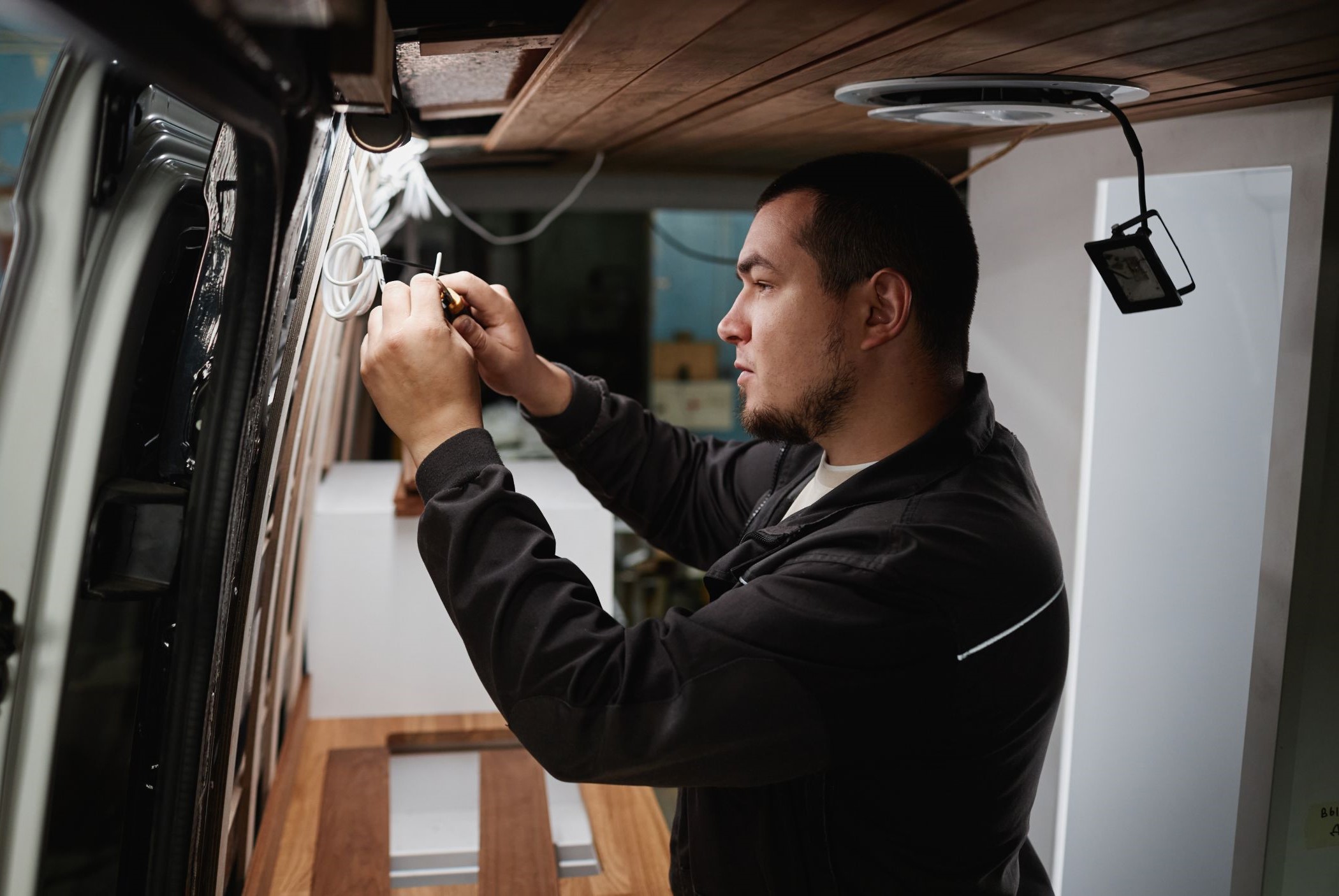
Wiring Your Solar Panels In Series vs. In Parallel
You might be wondering what the difference is between wiring panels in series or in parallel. Let’s break down the difference between wiring solar panels in series and parallel using a simple analogy:
- Series Connection:
Imagine you have a string of holiday lights. Each light is connected to the next one in a single line in a series connection. If one light goes out, the entire string might go out because they depend on each other. Similarly, when solar panels are wired in series, the positive terminal of one panel is connected to the negative terminal of the next, creating a chain-like connection.
For solar panels in series:
- The voltage adds up (e.g., if each panel is 12 volts, two panels in series would be 24 volts).
- The current remains the same.
- Parallel Connection:
Now, picture a set of light bulbs, each with its own independent power source. If one bulb goes out, the others still shine brightly. When solar panels are wired in parallel, all the positive terminals are connected together, and all the negative terminals are connected together.
For solar panels in parallel:
- The voltage remains the same.
- The current adds up (e.g., if each panel produces five amps, two panels in parallel would be ten amps).
Comparison:
- In series, voltage adds up, but the current stays the same.
- In parallel, the voltage stays the same, but the current adds up.
Application to Your Campervan Power System:
- Series: Useful when you want to increase the voltage for a specific component that requires higher voltage, like certain appliances or devices. However, shading or issues with one panel can affect the entire string’s output.
- Parallel: Beneficial when you want to maintain a consistent voltage but increase the overall current for charging batteries more efficiently. If one panel is shaded, the others can still contribute to the overall output.
Other Charging Options
Obviously, your solar panel array isn’t the only way to get juice into your batteries. Shore power and alternator charging are other options. Once you’ve figured out how much battery capacity you need in your electrical system, think about how much power you can reasonably expect to draw from the alternator and the shore power plug.
If you are moving around a lot – driving every day for long stretches – using the alternator as a battery charger might be a great option. Power might be readily available if you plan to spend a lot of time in campsites.
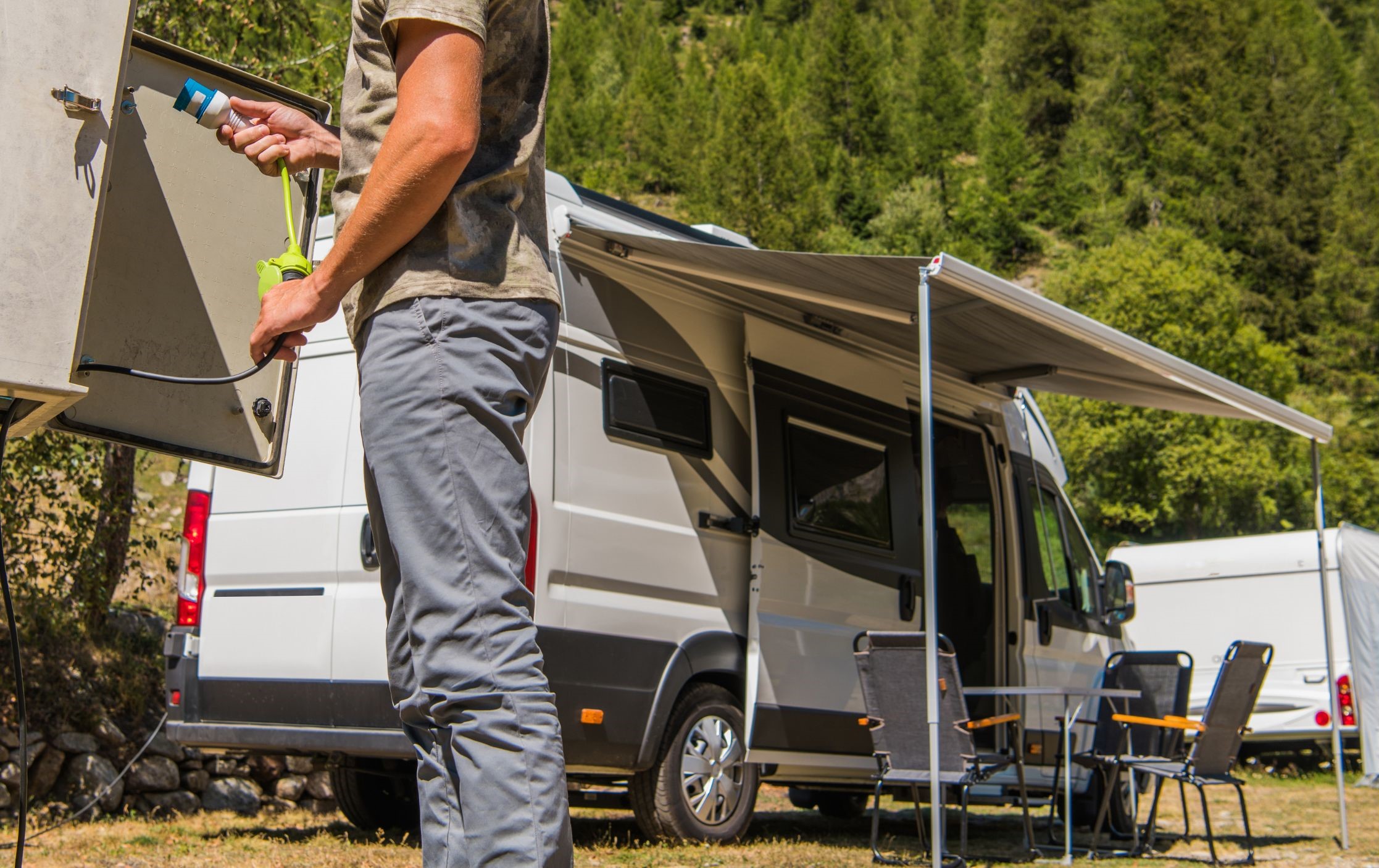
Managing Power Consumption
If you know you will be spending a good amount of time off the grid and stopping in one place for long stretches at a time, you might want to start thinking about how you can manage your camper power system.
Portable Solar Panels
A portable power supply like some small, foldable panels or a portable power station is a nice way to supplement your primary solar panel system. These can be used to charge small devices like laptops and phones, and take some of the load off your van’s primary solar electrical system.
Energy Efficient Appliances
Choose your appliances wisely. LED lights draw much less power than incandescent bulbs. 12v appliances are always more efficient than 120v ones because you don’t lose any power through the inverter.
Timing Power Use
If possible, try to charge devices and appliances during peak sun hours – when the battery charger is doing its job, and your campervan electrical system is operating at full capacity. This is especially important if you have lead acid batteries because you’ll stand less chance of accidentally discharging the batteries over 50%.
Always keep an eye on your battery monitor and check the status of your batteries every day.
Be Energy Conscious
Turn off devices and appliances when you don’t need them. Your internet router is probably very power-hungry – unplug it overnight to stop it from drawing power. Power AC appliances only when they’re needed, and store them when you’re not using them. Turn off lights when you leave, and run other power-hungry devices on a schedule (you can even put them on an automated timer to prevent accidentally leaving them on.) And always turn off your inverter when you’re not using it.
Summing Up
Wiring up your camper power system for van life can feel like an impossible task if you’ve never done it before. But working out the specs for the basic electrical system for your van becomes very easy once you understand a few key things. We hope this article has given you the confidence you need to attack your van build without fear so you can go Find Your Outside™!
